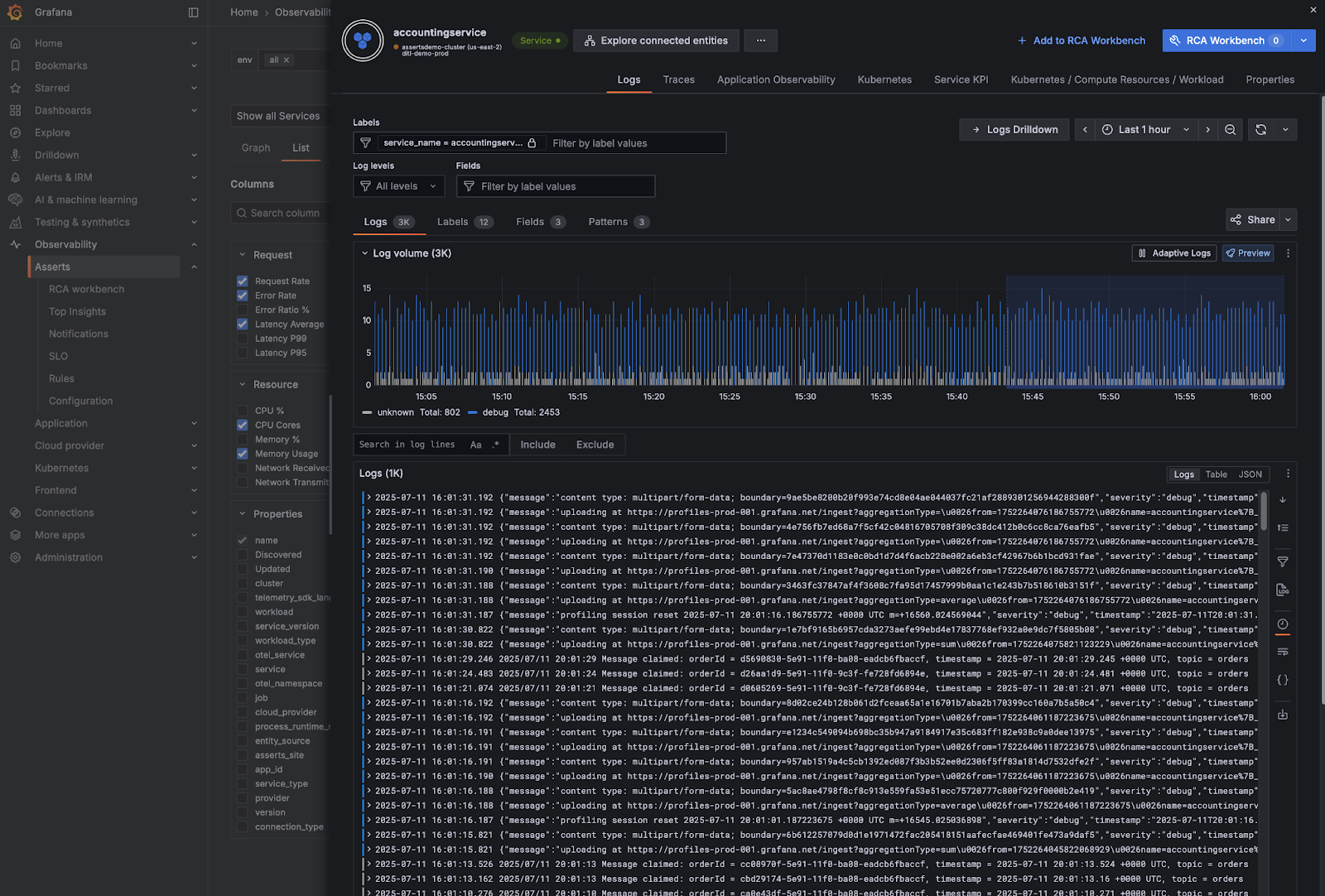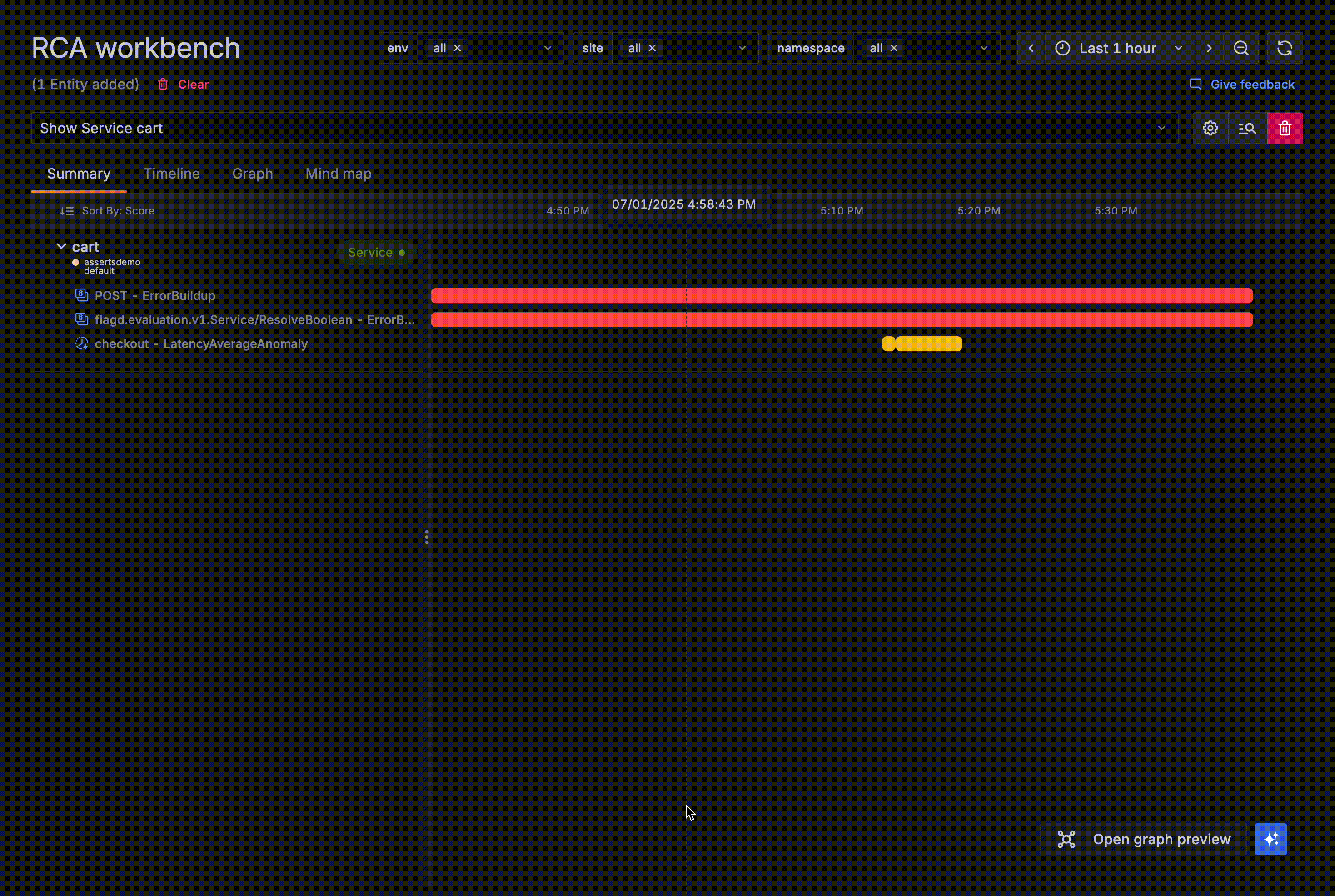What's new from Grafana Labs
Grafana Labs products, projects, and features can go through multiple release stages before becoming generally available. These stages in the release life cycle can present varying degrees of stability and support. For more information, refer to release life cycle for Grafana Labs.
Loading...
Area of interest:
Cloud availability:
Cloud editions:
Self-managed availability:
Self-managed editions:
No results found. Please adjust your filters or search criteria.
There was an error with your request.
Grafana Assume Role is now Generally Available (GA) for CloudWatch and Athena data sources! Grafana Assume Role allows you to authenticate with AWS without having to create and maintain long-term AWS users or rotate their access and secret keys. Instead, you can create an IAM role that has permissions to access CloudWatch or Athena and a trust relationship with Grafana’s AWS account. Grafana’s AWS account then makes an STS request to AWS to create temporary credentials to access your AWS data. More information can be found in the AWS authentication docs.
On-call engineers need to be instantly aware when critical incidents occur, even in noisy environments or during deep sleep. The Grafana IRM Mobile App now includes five new high-intensity alarm sounds specifically designed to cut through ambient noise and grab your attention when it matters most.
The alert rule page has received a total redesign. The new page features a smoother, faster, and more flexible design to help make your alert rule management easier.
The Google Sheets data source just got more powerful! Our 2.2.0 release adds support for template variables, making it easier to build interactive and adaptable dashboards directly from your spreadsheets.

Grafana now supports Entra Workload Identity, significantly enhancing authentication capabilities with federated credentials. This update simplifies the OAuth flow and improves security for Grafana instances leveraging Microsoft Azure, and was a valuable contribution from an external contributor. Thank you mehiglow.
We’re excited to announce that you can now define custom variables within visualization actions. When you trigger an action (such as an API request), you’ll be prompted to provide input for those variables. This makes actions more dynamic and interactive, allowing you to tailor requests in real time without modifying the dashboard configuration.
We are announcing the availability of embedded Logs Drilldown within Asserts. This is our second milestone, coming hot off the heels of launching the embedded version of Traces Drilldown in Asserts.

You can now define additional static options for query variables to be included with the options retrieved by querying the data source. This affords you more flexibility, allowing you to create options like “value not set” or “all clusters in Asia”.

Mute Timings have been renamed to Active Time Intervals to better align with their usage.
With auto-apply, you now get all of the benefits of Adaptive Metrics, in a more timely manner. Using auto-apply, recommendations are applied automatically, without a human in the loop. Maximize your cost savings and observability outcomes, and spend less time reviewing recommendations!
The Drilldown Apps are going places! We’re ensuring our opinionated experiences can benefit from our best-of-breed signal exploration workflows by making them embeddable in other contexts. Our first milestone is the integration of Traces Drilldown in the Asserts KPI drawer.

Introducing the all new user experience for per stream exports in Grafana Cloud Logs.
With per stream export, you can configure Grafana Cloud to export select log streams to your object storage bucket in AWS, Google Cloud, or Azure. By only exporting a subset of your logs, you can significantly reduce your object storage costs and minimize logs needed to sort through after being stored.
Grafana Fleet Management now supports Amazon Web Service (AWS) PrivateLink. You can securely connect your virtual private clouds (VPCs) to Fleet Management APIs without using the public internet.

The days of manually deleting inactive collectors from your inventory are over! Grafana Fleet Management now automatically marks collectors inactive if they haven’t polled for a remote configuration in the last 3 hours. Collectors that are inactive for 30 days are deleted from your inventory.
We’ve redesigned the Reporting feature to make the report creation process simpler and more intuitive!
Key updates include:
- Creating reports from dashboards while maintaining dashboard context
- One-page report creation
- Easy access to organization report settings
When you click Share > Schedule report from a dashboard, a drawer opens where you can complete the entire report form. With this change, you’re no longer taken out of the dashboard, but instead maintain your original context. If other reports include this dashboard, they are also listed in the drawer, helping to reduce duplication of efforts.

